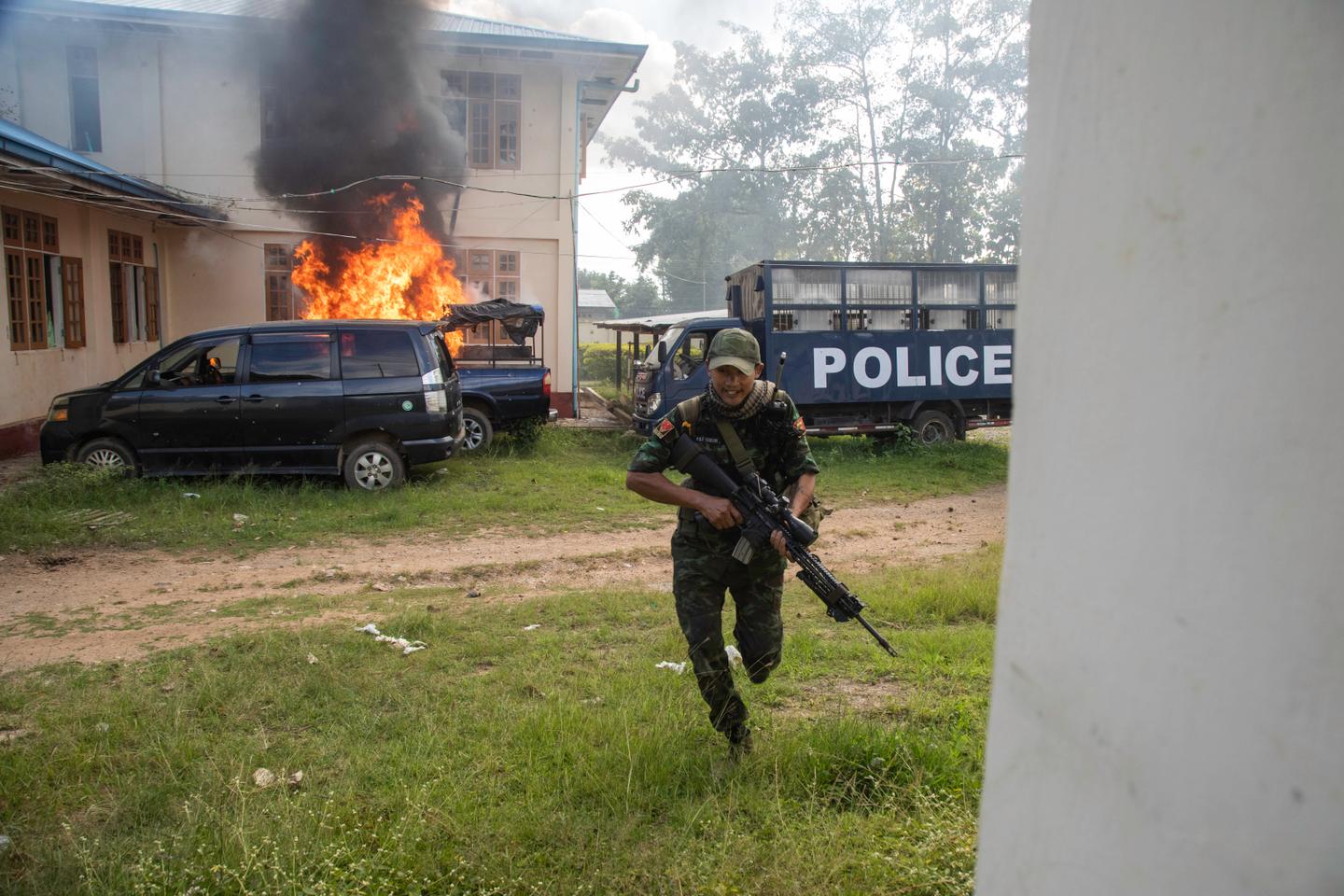


In a fractured country where ruling juntas had always managed to cope with the recurrent ethno-political instability, the failure of Myanmar's military regime is glaringly obvious. Not since the country became independent in 1948 had Myanmar's army found itself in such a predicament. The current situation is even worse than the aftermath of the British colonists' departure, when ethnic Karen guerrillas reached the outskirts of Yangon and threatened the capital directly; or the difficult days of 1968, when the Communist rebellion, supported by Maoist China, launched an assault on regular army soldiers on the borders of the Chinese empire.
The regime appears to be on the verge of collapse. The protean galaxy of resistance movements in the north, south, west and east continues to score military successes. Over 30 towns have fallen to the "revolutionaries" in the space of a few months. The regions controlled by the regime have been shrinking at an alarming rate. According to the Japanese press, some diplomatic sources in Yangon even predict the junta's remaining life expectancy to be mere months.
And yet, besides the fact that a brutal scenario like Saigon (1975) or Kabul (2021) remains far from certain – Myanmar's army remains strong, well-equipped, and the very backbone of the government, or what's left of it – the key question may no longer be when but how the regime will fall.
As February 1 marked the third anniversary of the 2021 coup that toppled Aung San Suu Kyi's elected government, another uncertainty looms: What will be the shape of tomorrow's Myanmar if the army is defeated? How will a country that has long been unable to become a "nation-state" be able to rebuild itself as the genuine federation called for by the minority ethnic groups (30% of the population) and their respective guerrillas? Will the power-hogging majority Bamar ethnic group agree to make the necessary concessions, as promised by some of its elites who joined the resistance?
'National disunity'
The National Unity Government (NUG), the exiled government of the "revolution" and an offshoot of the former government of now-imprisoned Suu Kyi, has signed a "federal charter" with the main organizations of "ethnic" resistance fighters. It promised that should the armed opposition win, the new Myanmar would respect the rights of all its citizens regardless of their ethnic or religious background.
Be that as it may, the mistrust between the dominant and the dominated is unlikely to disappear on its own. The Bamar and the ethnic minorities have never been able to find common ground, as was made evident even before independence by the failure of the Panglong Conference (1947), which was supposed to create an inter-ethnic national union. Far from forming a united front, these minorities have, at times, gone to war with each other. Guerrillas remain divided from within by internal political struggles.
You have 45% of this article left to read. The rest is for subscribers only.
